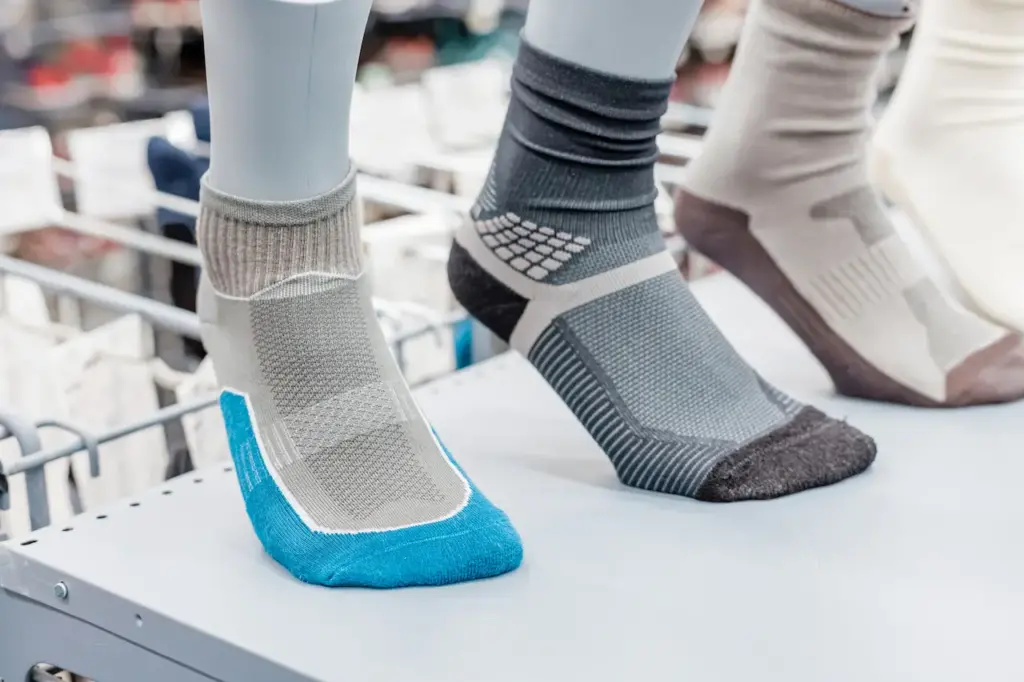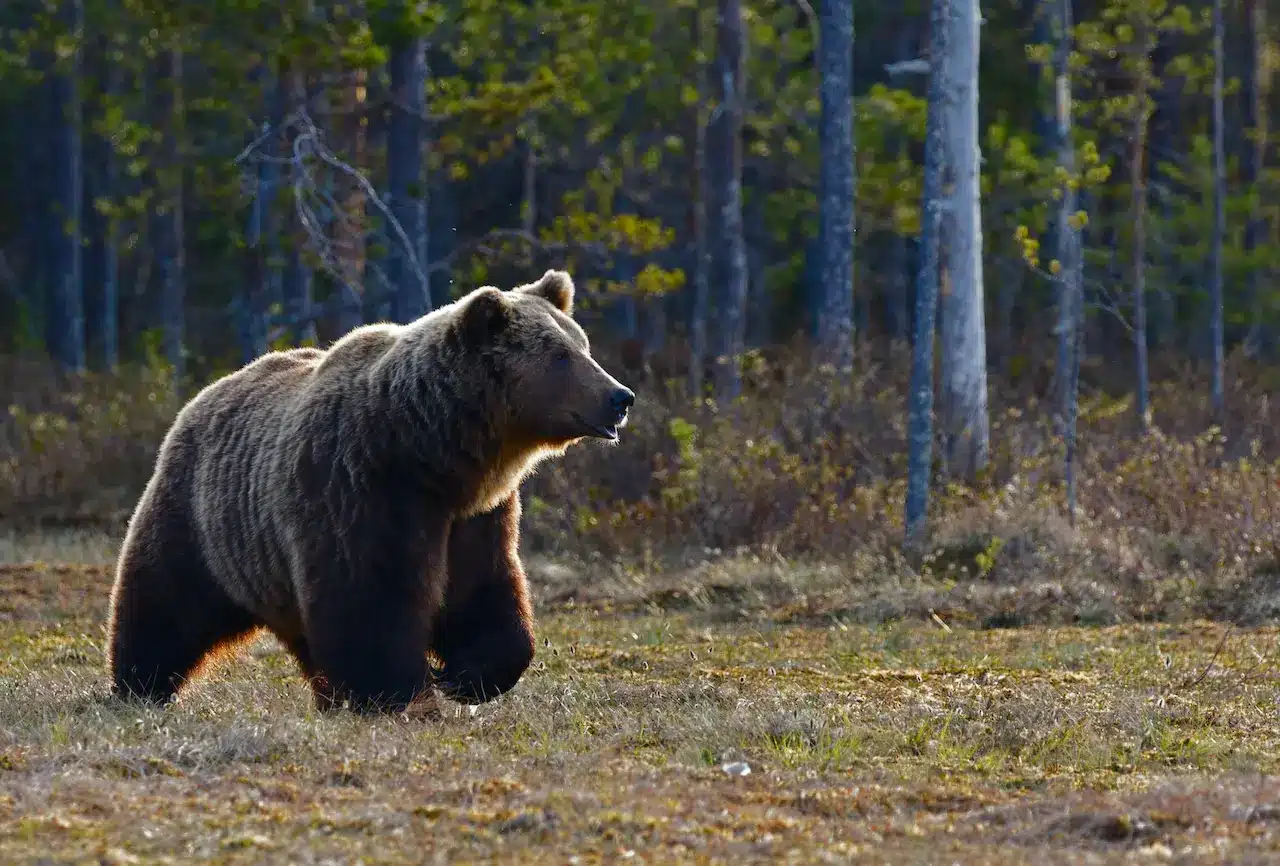When you’re getting ready for a big hiking trip, a good pair of hiking socks is one of the most important gear purchases you can make. But with the huge variety of hiking socks on the market, how do you know which option is right for your needs?
This detailed guide will walk you through all the key factors to keep in mind when shopping for the best hiking socks. We’ll cover everything from materials and height to cushioning and special features so you can find the ideal socks for the conditions and activities planned.
Whether you’re looking for lightweight socks for summer or extra thick cushioned socks for winter, blister protection, or moisture-wicking performance, we’ll help you decode all the sock lingo so you can shop like a pro. Let’s get started!

Factors to Consider When Choosing Hiking Socks
When you want to buy hiking socks, there are a lot of essential factors to consider:
Height
The first decision to make when choosing hiking socks is the height you need. Sock height determines how they fit with your hiking shoes or boots and the level of coverage and protection provided. Consider these common hiking sock height options:
No Show Socks
No-show socks are the shortest option, ending right above the shoe line. As the name suggests, they are not visible when wearing shoes. The ankles are exposed. They are too short to be compatible with boots. Best for low-cut hiking shoes.
Ankle Socks
Ankle socks rise to the ankle bone, providing coverage of the ankle itself. They work well with all types of shoes. However, ankle socks sit lower than most hiking boots. To prevent rubbing and blisters, they are not ideal for boot wear.
Crew Socks
Crew socks are mid-length, typically ending halfway between the ankle and knee. This places them right at the top of most hiking boots. The added coverage prevents boot rubbing while not being as hot as tall socks. A popular choice for hiking boots.
Knee High Socks
As the name suggests, knee-high socks extend well past the ankle up to or beyond the knee. When worn with boots, they bunch at the top. Excellent for providing warmth in cold weather but quite warm for summer hiking.
Material
Considering Materials Next, you’ll want to think about sock materials. Material impacts attributes like breathability, moisture wicking, durability, and comfort. Look for these top materials used in quality hiking socks:
Merino Wool
Merino wool is a top choice for hiking socks. It regulates temperature, stays warm even when wet, and resists odour-causing bacteria. Strong and durable, yet soft and comfortable. The best all-around material.
Synthetic Polyesters
Synthetics like polyester are affordable but tend to be less breathable. Quality socks blend synthetics sparingly with natural fabrics. Adds durability when mixed into wool blends.
Cotton
Cotton is breathable and moisture-absorbing. However, it stays wet longer than wool or synthetics. Best for casual, short-term wear rather than heavy hiking. Loses insulating ability when wet.
Silk
Silky, soft, and comfortable, but lacks durability for extended wear. Usually mixed sparingly into wool blends for added softness. Not good at moisture-wicking.
Bamboo Rayon
Made from bamboo pulp, bamboo rayon is breathable and moisture-wicking. Eco-friendly too. Provides a more relaxed alternative to wool for warm-weather hiking.
Alpaca Wool
Alpaca wool comes from alpacas rather than sheep. It is soft, durable, and wicks perspiration. Also warmer than sheep wool and contains no lanolin, so it’s hypoallergenic.
Cushioning and Thickness
Hiking sock thickness ranges from ultra-thin liners to heavily cushioned options. Match this to the weather conditions and your footwear preferences:
Liners
Liners are worn under hiking socks to prevent blisters. Ultra thin with a snug fit. Synthetic or wool materials. Also worn alone in hot weather.
Ultra Lightweight
As the name implies, these are exceptionally thin and provide minimal bulk. Great for light hiking shoes in warm climates. Not enough padding for extended hikes.
Lightweight
A thin, lightweight construction ideal for warm weather hiking or short distances. Lacks insulation for cold. Prevents overheating better than thicker socks.
Midweight
Midweight socks with medium cushioning strike an excellent balance. Provides comfort across most conditions while avoiding excessive bulk. A popular standard.
Heavyweight
Heavily cushioned socks are designed for cold weather hiking or hiking boots. Maximum warmth and padding. The extra bulk can mean a tighter fit in shoes.

Fit
It’s vital to get a proper fit in hiking socks to prevent painful blisters and hot spots:
- Seek an athletic fit, not a casual loose fit – allows better airflow and blister prevention.
- Look for a snug fit through the heel and arch to reduce sliding.
- Toes should have some wiggle room and avoid feeling constricted.
- The top should offer light compression without restricting circulation.
- Try on socks with hiking shoes/boots for the best assessment of fit.
Special Features
Finally, look for these special features that enhance comfort, support, and performance:
- Odour Control – Anti-microbial properties reduce bacteria and smelly feet.
- Elasticity – Provides a secure fit that flexes with the foot and avoids sagging.
- Ventilation – Mesh zones improve breathability and airflow.
- Cushioning – Extra underfoot padding prevents impact injuries and fatigue.
- Arch Support – Contoured in the arch area to provide stability and reduce aches.
- Seamless Toes – Prevents irritation, friction, and blisters from bulky seams.
Caring for Your Socks
Follow these tips to get the most extended lifespan out of your hiking sock investment:
- Wash in cold water to prevent shrinkage, and line dry to avoid damage from heat.
- Use a mesh bag for washing and drying to prevent stretching and socks from sticking together.
- Avoid fabric softeners and dryer sheets, which coat fibres and reduce moisture wicking.
- Wash socks inside out to protect the outer fabric from wear and tear.
- Hand wash or use a delicate cycle setting to be gentle on sock materials.
- Carry spare dry socks on long hikes to allow changing as needed.
- Rotate evenly between multiple pairs to distribute wear and maximize longevity.
Bridgedale Midweight Boot Height Merino Hiking Socks
The Bridgedale Midweight Boot Height Merino Wool Blend Hiking Socks are a top choice for hiking enthusiasts looking for a durable and comfortable sock.
Constructed from a blend of 26% merino wool, 38% nylon, 17% polypropylene, 18% new wool, and 1% lycra, these socks offer the temperature-regulating properties and soft comfort of merino wool along with abrasion resistance and stretch recovery.
The boot height provides ample coverage reaching mid-calf, ideal for preventing debris from entering boots. Cushioning through the shin, ankles, heels, and forefoot absorbs shock and reduces fatigue from miles on the trail.
The anatomic design eliminates bunching, while the medium weight delivers warmth without overheating. These socks excel in cooler conditions from autumn through spring. Available in sizes medium to extra large, they come in neutral earth tones like green, grey, and rust.
Outdoor adventurers praise these socks for their comfort on extended hikes and durability over years of wear. The Merino wool blend remains soft against the skin with a moisture-wicking performance to keep feet dry.
While a bit pricier than basic socks, the Bridgedale boot socks are an excellent investment for avid hikers needing a warm, cushioned sock that outperforms other options.
Pros:
- Soft, warm merino wool
- Durable and abrasion-resistant
- Moisture-wicking and quick-drying
- Targeted padding for blister prevention
Cons:
- Slightly expensive
- Limited color options
Wigwam Merino Hiking Socks
The Wigwam Merino Comfort Hiker Sock utilizes a blend of 67% merino wool, 21% stretch nylon, 7% elastic, and 5% acrylic to create a durable, odor-resistant sock.
The high merino wool percentage results in a luxuriously soft hand feel yet remains warm and dry. Stretch nylon and elastic provide an excellent fit that moves with the foot without sagging or constricting.
These crew-height socks feature light cushioning through the foot and leg for all-day comfort on the trails. Despite the light padding, they still reduce impact and prevent rubbing.
The Dri-release polymer technology wicks moisture while ecofresh treatment prevents odours even after miles of hiking. Seamless toe construction helps avoid blisters for a friction-free fit.
The Wigwam socks are machine washable for easy care and available in sizes small to extra large. They come in a versatile grey colour suitable for both men and women.
As budget-friendly merino wool hiking socks, these deliver impressive performance and comfort, rivalling pricier competitors.
Outdoor enthusiasts recommend them as durable, lightweight, and breathable socks for year-round hiking. The quality rivals the best Merino wool socks without the high price tag.
Pros:
- Soft merino wool construction
- Odor prevention technology
- Affordable price
- Snug stretch fit
- Padding for comfort
Cons:
- Limited sizing options
- Prone to pilling in the wash
Injinji Outdoor Midweight Crew Nuwool Hiking Socks
The Injinji Outdoor Midweight Crew Nuwool hiking socks set themselves apart with a unique toe sock design. Made from a blend of 43% merino wool, 43% acrylic, 12% nylon, and 2% lycra, the socks wrap each toe individually for enhanced comfort and blister prevention.
The merino wool offers temperature regulation and moisture management, while the acrylic provides durability and stretch.
The proprietary Nuwool material accelerates evaporation, keeping feet dry and comfortable on the longest hikes. An anatomical design eliminates bunching and hot spots for friction-free wear. Arch support stabilizes the foot during trekking over uneven terrain.
High-density padding cushions the forefoot, heel, and toes without added bulk. The crew height sits just below the calf.
Injinji socks are available in sizes small to extra large in neutral, dark grey, and black colours. The innovative toe sock design may feel strange initially, but it prevents blisters and calluses between the toes.
Outdoor adventurers praise their comfort for hiking, climbing, and trail running. For those prone to toe blisters, these socks are a game changer.
Pros:
- The toe sock design prevents blisters
- Nuwool moisture wicking
- Padding for comfort
- Durable construction
Cons:
- Toe socks aren’t for everyone
- Run large in sizing
Azengear Coolmax Merino Wool Hiking Socks
The Azengear Coolmax hiking socks blend 60% Coolmax, 15% Merino wool, 23% nylon, and 2% lycra to wick moisture and regulate temperature.
Developed in the 1980s, coolmax polyester efficiently wicks perspiration while the Merino wool insulates feet during cold days but prevents overheating in the heat. The nylon and lycra add durability and stretch.
The boot-height socks provide coverage reaching mid-calf, which is ideal when wearing hiking boots. Cushioning pads the heels, toes, and other high-impact zones of the feet to absorb shock.
A seamless toe box prevents abrasion and blisters across the toes. Available in neutral colours like black, grey, navy, and brown, these socks come in sizes medium through extra large.
Outdoorsmen praise these socks for keeping feet dry and comfortable through long miles on the trail. The merino wool remains soft against the skin, resisting odours. While these socks run large, many hikers recommend sizing down for the proper snugness.
For temperature regulation and blister protection, the Azengear Coolmax hiking socks deliver excellent performance and comfort.

Pros:
- Merino wool for temperature regulation
- Breathable Coolmax material
- Padding to prevent blisters
- Boot height for protection
- Machine washable
Cons:
- Sizing runs quite large
- It can be prone to holes
Icebreaker Merino Men’s Medium Crew Hiking Socks
Constructed from a blend of 65% merino wool, 33% nylon, and 2% lycra, the Icebreaker Men’s Medium Crew hiking socks provide soft, breathable comfort mile after mile.
The Merino wool naturally resists odours and wicks moisture while regulating temperature in all seasons. super-fine fibres create an ultra-soft hand feel, while nylon and lycra reinforce the socks’ durability.
These machine-washable socks hold their shape and performance through countless wears and washes. The medium cushioning offers light padding without excessive bulk, suitable for both boots and hiking shoes.
An anatomical design eliminates bunching and provides arch support for stability on uneven terrain. Available in sizes small through large, the socks come in versatile heathered grey.
While pricier than basic socks, the Icebreaker Merino hiking socks receive rave reviews for their luxurious softness, temperature regulation, and odour resistance. The medium cushioning provides all-day comfort without overheating feet.
Hikers recommend these socks for travel and daily wear in addition to hiking for their moisture-wicking performance and durable construction.
Pros:
- Durable merino wool construction
- Odor resistant qualities
- Withstands repeated wears
- Medium cushioning for versatility
- Soft, comfortable feel
Cons:
- Limited colour selection
- Expensive
Thorlos Thick Padded Crew Hiking Socks
The Thorlos Thick Padded Crew socks provide cushioned comfort at an affordable price point. Constructed from a blend of 59% acrylic, 21% polyester, 16% nylon, and 4% elastic, these socks offer thick padding without wool. The acrylic makes them soft, while the polyester and nylon add durability.
The padding in the heels and ball of the foot helps absorb impact, similar to the natural fat pads on feet. Crew height sits just below the calf. Revolutionary Thorlon fibres wick moisture and resist damage from repeated use.
These Thorlos hiking socks come in grey and blue colour options, available in men’s and women’s sizes, medium to extra large. Customers praise the plush padding and cushioning that prevents pain and fatigue during long miles of hiking.
For an affordable yet comfortable padded hiking sock, Thorlos delivers impressive quality and performance.
Pros:
- Thick cushioning for comfort
- Moisture-wicking acrylic fibres
- Durable construction
- Affordable price point
- Available in men’s and women’s
Cons:
- Lack of temperature regulation of wool
- Limited colour selection
Conclusion
With hundreds of hiking sock options on the market, choosing the right pair for your needs can seem daunting. However, by keeping a few key factors in mind, you can narrow down your options and find the perfect socks for comfort on the trails.
The ideal hiking socks match the temperature rating, cushioning level, and height of your planned hiking conditions and footwear. Wool blends provide temperature regulation and odour resistance, while synthetics add durability.
A medium cushioning provides versatility for most hikes. Crew and boot heights work well with hiking boots.
When trying on socks, focus on getting a snug, friction-free fit in the heel, arch, and toe area. Athletic fits prevent rubbing, while seamless toes increase comfort.
Look for moisture-wicking fabrics and anatomical designs. Breathable mesh zones, arch support, and reinforced heels also enhance performance.
While merino wool is tops for comfort and temperature regulation, quality synthetic blends can also make excellent hiking socks at a lower price point. Lightly padded liner socks help prevent blisters when worn under regular socks.
Now that you know what to look for, take your time browsing different brands and styles. Consider local outdoor retailers that allow you to try socks on with your hiking boots. Invest in multiple pairs for rotation. With the proper fit and features, a good hiking sock helps take your adventures in beautiful wilderness to the next level.



